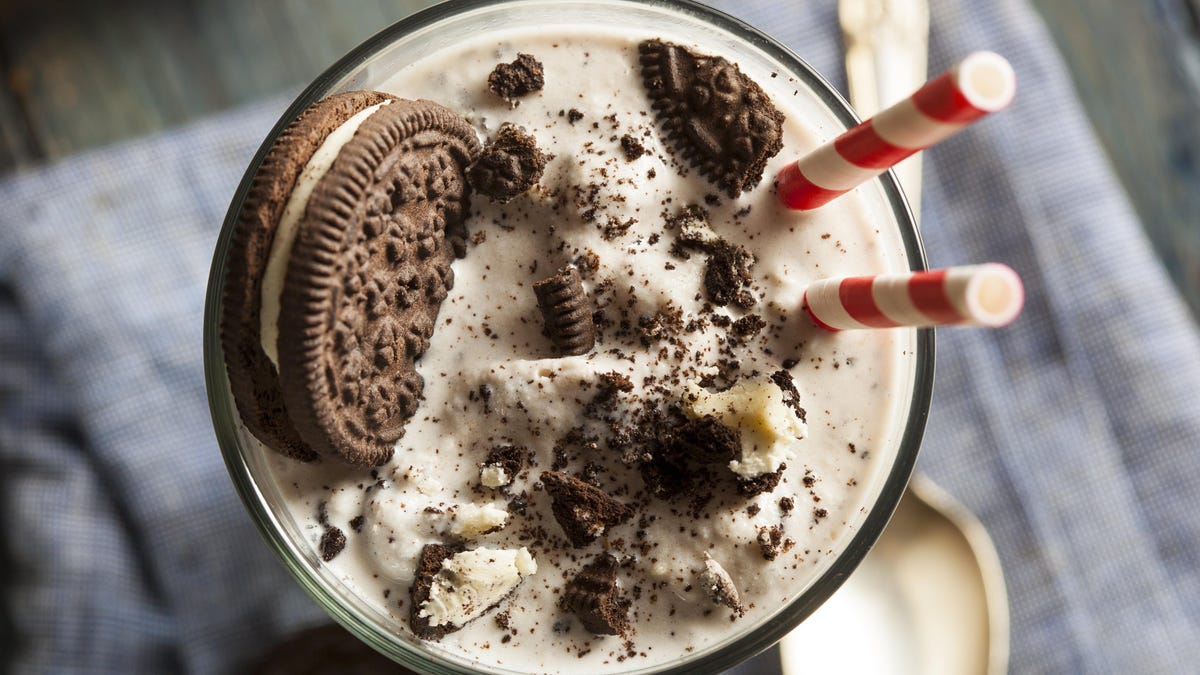The Difference Between Milkshakes and Concrete (and How to Make Them)

Milkshakes and concretes are two frozen treats that look awfully similar. As Memorial Day approaches and the demand for frozen desserts skyrockets, it’s time to find out the difference between these two creamy treats. Both are amazing, but one is easier to reproduce at home than the other.
What does a milkshake do?
A milkshake starts with ice cream or a frozen ice cream-like dessert. This is a simple but important distinction, as you will see later with concretes. A small amount of liquid, usually milk, is added to the ice cream, and the entire mixture is quickly mixed with the stick of a milkshake machine . The milkshake machine is designed to keep the dessert as cold as possible, the motor is located away from the ice cream, and a mixing stick with one or two blunt discs ensures stirring. This quick mix will give you a thick, sweet, drinkable version of your favorite ice cream. It’s still cold and frosty, but a little liquid and excitement breaks up the ice cream enough to drink.
Milkshakes are easy to make at home, even if you don’t have a milkshake machine. You can use a regular blender or even an immersion blender to make this summery treat. (Actually, an immersion blender is preferable, as its motor is positioned the same as a milkshake machine.) Simply add half a pint of ice cream to the blender bowl with 1/4-1/3 cup milk. The less milk, the thicker the milkshake, but you need something to get the blender blades to catch the ice cream. Beat for about a minute. Milkshakes usually don’t have chunks, so they can be enjoyed through a straw, but if your ice cream contains brownie chunks or peanut butter cups, feel free to use them. These additives have been in the mix for as long as it is on the grocery store shelf, so they have softened a bit. The blender will grind up the inclusions, and you can still drink them through a straw along with the rest of the ice cream. Or, if the bits are too big, forget the straw. This is your home.
Consider concrete
Concrete has some distinct differences from milkshake, specifically the base custard mix, final texture, and additives. Technically, the regular ice cream you buy at the store and use in your regular milkshake is made from custard. Custard is dairy products thickened with heated whole eggs or egg yolks, and concrete uses a custard base that has a higher ratio of egg yolks than regular ice cream.
More yolks in custard make it a thicker, richer, creamier product that whips and freezes with a firmer texture than regular ice cream. Creamy custard is whipped and frozen in the same way as regular ice cream. After that, the frozen custard is ready to eat, but in order for it to become solid, you must add delicious treats to it. Instead of adding liquid to make the mixture drinkable, no liquid is added, but large chunks of other things like donuts or cookies are added. On the menu, the additives listed usually follow the base. It’s not donut flavored, it’s real donuts. The concrete will be thick enough to stand and straw will not do. Only a spoon can help you deal with it.
Making concrete at home should be easy; after all, you don’t need a blender. The big problem is that commercially packaged frozen custard is rare in grocery stores (at least where I live), so you have to make custard from scratch. Now you need special equipment, in particular, an ice cream churn. Luckily, custard recipes are relatively simple and most of the time they are not used during whipping or freezing. Once your custard has set, transfer it to a bowl and add whatever you like. Try crumbled donuts, cookies, sliced Twix bars, goat cheese, maple bacon, or topped with chocolate sauce.
Then there is always the last option. Make artificial concrete. Buy your favorite ice cream, let it soften on the counter for 10 minutes, and mix crumbled desserts with it. Summer has come.